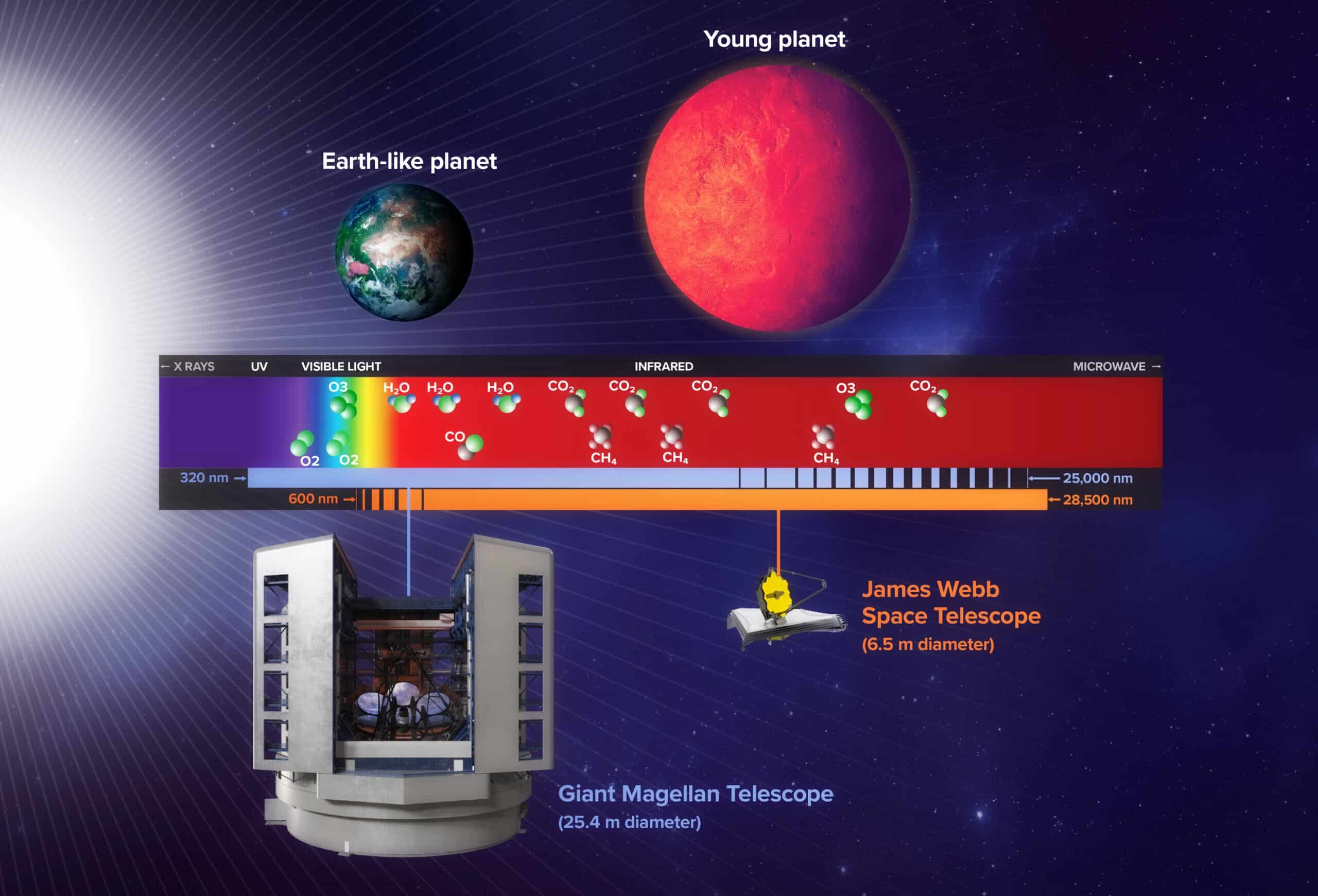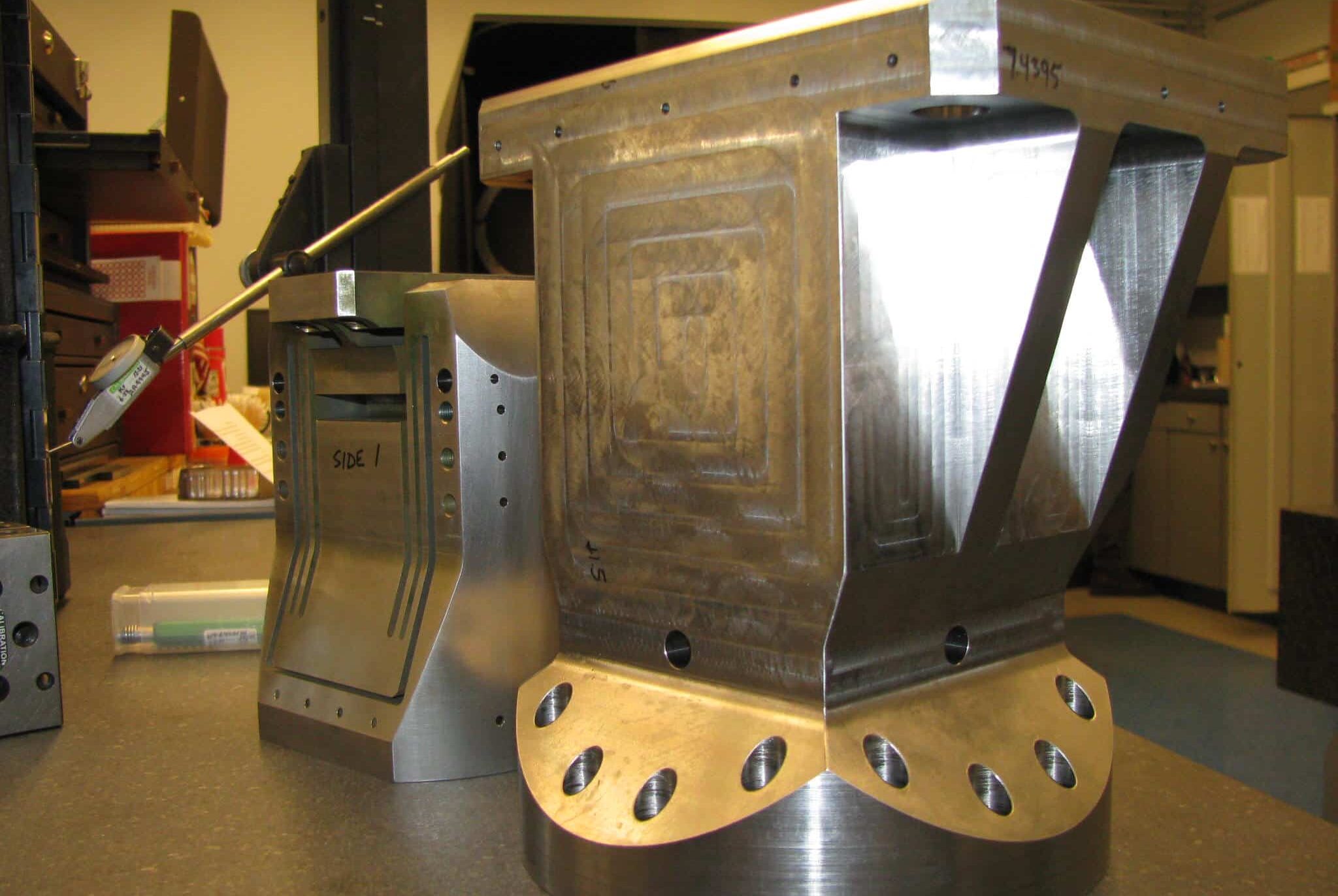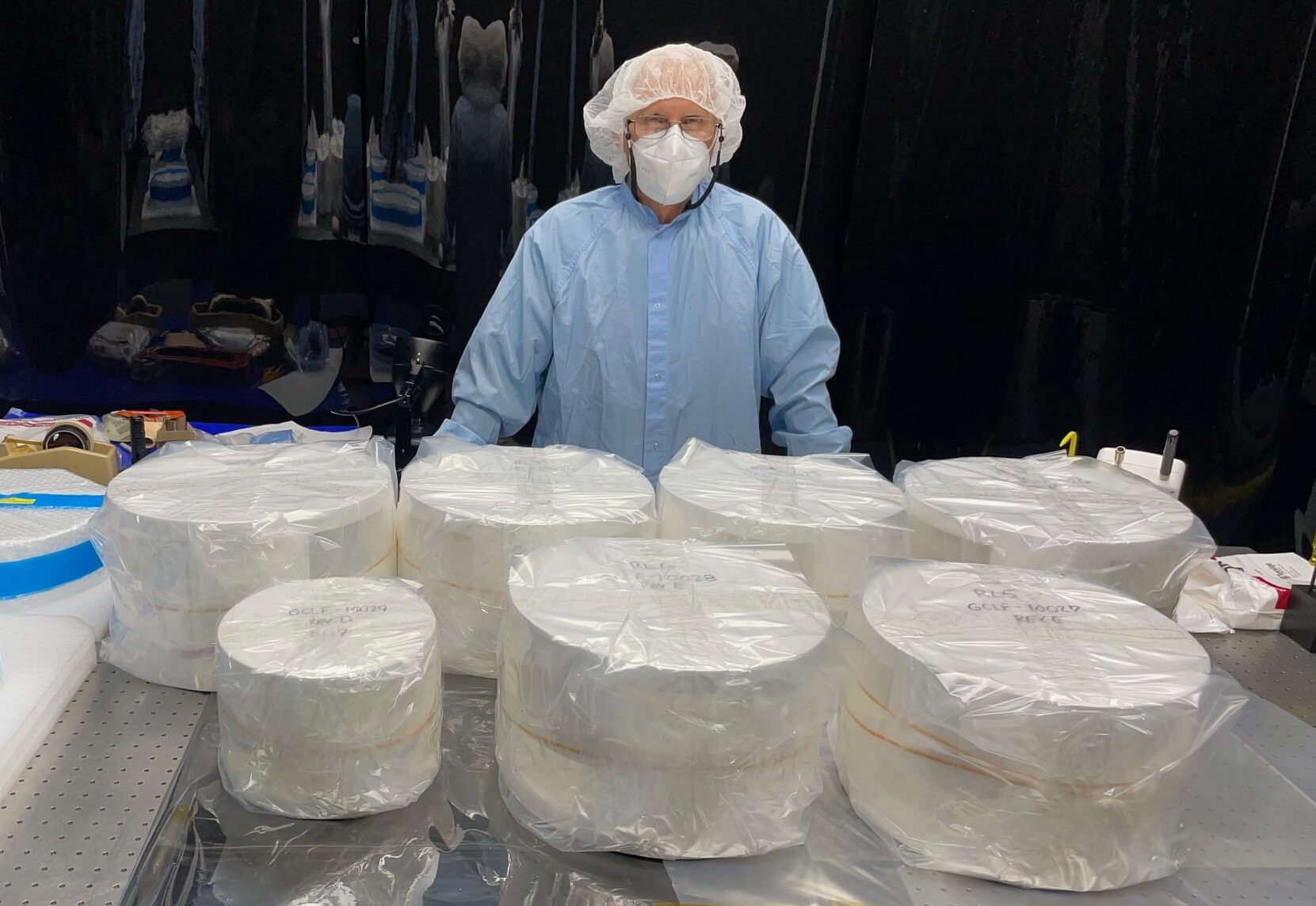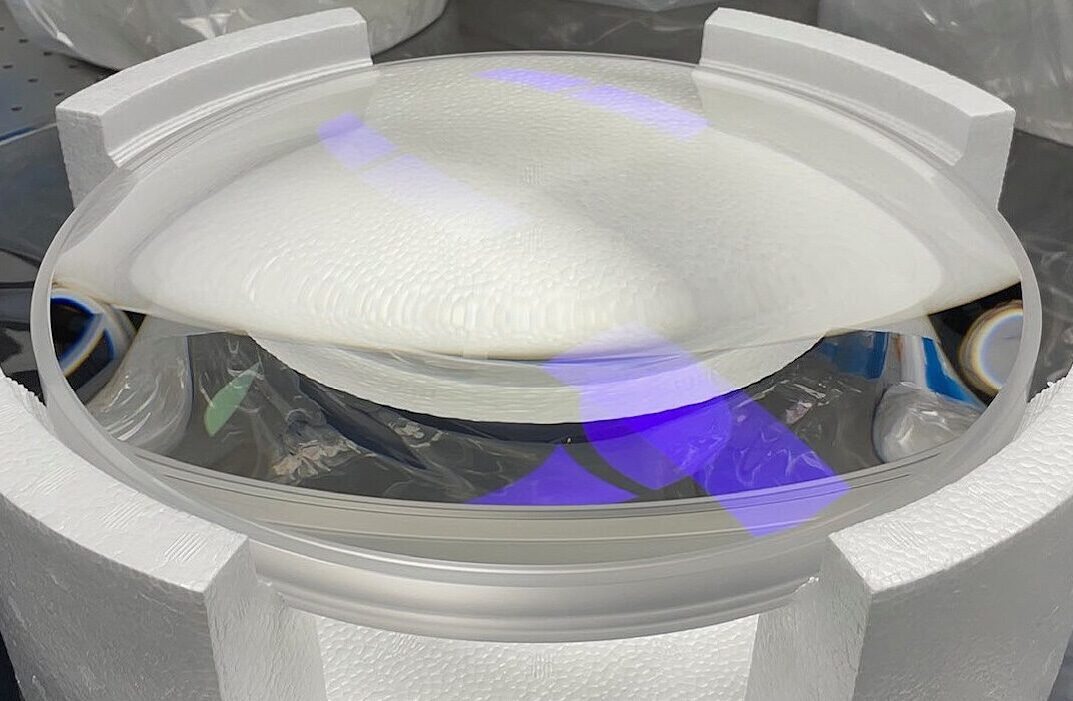Searching for Life Beyond Earth

New technologies that will deepen our understanding of the Universe
For more than 4,000 years, astronomy has transformed humanity’s view of our place in the cosmos. Only 400 years ago, most of mankind regarded Earth as the center of the Universe, with the Sun and planets orbiting us. Only in the last 30 years have the current generation of space and ground based telescopes proven that planets beyond our solar system are ubiquitous.
Moreover, roughly 20% of the stars in the Milky Way galaxy are orbited by planets that are “habitable”—meaning they are the right temperature to carry liquid water, which is believed to be a key ingredient for life. This translates to roughly 40 billion potentially habitable worlds in our galaxy alone. For perspective, the first exoplanet discovery was confirmed just over thirty years ago through a revolutionary technique that measures the tiny “jitter” in the position of a star, caused by the gravitational pull between the star and a planet as the planet orbits it. There have been many surprises since the first landmark exoplanet discovery. For example, it seems that our Earth is rare—large gaseous planets are more common. That means that finding and studying the rocky planets that are potentially habitable will be even more challenging. Identifying life on one of those planets will be harder still as we can only do so by identifying crucial biosignatures, or molecules created by life. The Giant Magellan Telescope will be a key part of that search.
Importance of Visible Light
Planets, stars, galaxies, and other objects emit and reflect electromagnetic radiation in the form of photons that have a wide range of energy values, some we can see with our eyes, and some we cannot. To explore our Universe, scientists study light at all energy levels (or wavelengths), from high energies (x-rays) to low energies (radio waves) and everything in between. Telescopes like the Giant Magellan Telescope and the James Webb Space Telescope study the visible and infrared part of the spectrum, where many of the molecules created by life can be detected. Some key molecules are only detectable in the visible spectrum—the spectrum humans can see in.
Key issues for the possible existence of life include a planet’s composition, temperature, and location. Planets that support life will be old planets that have had time to cool down since they first formed and where life will have had time to evolve. These planets are faint because they don’t emit their own light. They only reflect the light of their parent star, like our Earth and Moon reflect the Sun’s light. Unfortunately, cooler, older planets are harder to detect than hot, young planets that radiate brightly due to their own heat. To detect and study these faint and rocky cool planets, a large mirror is needed to gather enough light to see the planet, and enough spatial resolution to be able to separately see the planet and star—the latter also requires some high-tech wizardry.
 The visible-light spectrum is essential for studying exoplanets and detecting signs of life. Young, forming planets are hot, and therefore bright at infrared wavelengths. The James Webb Space Telescope excels at infrared observations and detecting molecules in the atmospheres of hot planets. Earth-like planets that can support life are both rocky and cool, and therefore faint in the infrared. The Giant Magellan Telescope excels at visible-light observations and detecting molecules created by life in the atmospheres of cool planets.
The visible-light spectrum is essential for studying exoplanets and detecting signs of life. Young, forming planets are hot, and therefore bright at infrared wavelengths. The James Webb Space Telescope excels at infrared observations and detecting molecules in the atmospheres of hot planets. Earth-like planets that can support life are both rocky and cool, and therefore faint in the infrared. The Giant Magellan Telescope excels at visible-light observations and detecting molecules created by life in the atmospheres of cool planets.
This starts in the form of adaptive optics, which removes the blurring effects of the Earth’s atmosphere to provide the spatial resolution that the telescope would have if there were no atmosphere. Using the world’s most advanced adaptive optics technologies, the Giant Magellan Telescope will be able to separate the visible light emitted by a parent star from the atmosphere of an Earth-like planet. Another bit of wizardry, a form of masking called coronagraphy, does the same thing for the telescope as one would with their hand to block the Sun while viewing a bird overhead. Then, using a specialized suite of high-resolution imagers and spectrographs, the Giant Magellan Telescope will measure the molecular content of a planet’s atmosphere. While any one molecule, such as molecular oxygen, could come from processes other than life, the right combination of molecules (biosignatures) will be the first clue to the presence of life on a planet. The sensitivity, spatial resolution, and wavelength range offered by the Giant Magellan Telescope is key for detecting the biosignatures we seek.
Progress on Life-Finding Technologies
 Dr. Andrew Szentgyorgyi is an astrophysicist at the Harvard Smithsonian Center for Astrophysics and the principal investigator on the Giant Magellan Telescope’s Large Earth Finder instrument. Szentgyorgyi specializes in optical high-dispersion stellar spectroscopy with a focus on precision measurements of stellar radial velocities.
Dr. Andrew Szentgyorgyi is an astrophysicist at the Harvard Smithsonian Center for Astrophysics and the principal investigator on the Giant Magellan Telescope’s Large Earth Finder instrument. Szentgyorgyi specializes in optical high-dispersion stellar spectroscopy with a focus on precision measurements of stellar radial velocities.
Smithsonian scientist Dr. Andrew Szentgyorgyi is leading the team building the first science instrument to be deployed on the Giant Magellan Telescope—the Large Earth Finder. This precision spectrograph was designed to find Earth analogs from their gravitational pull on their parent stars using Newton’s Third Law—the law of equal and opposite reactions. It will also allow us to detect biosignatures. Specifically, the Large Earth Finder will focus on measuring the atmospheric chemistry of exoplanets in the habitable zone to determine if molecules such as methane and oxygen are present.
 Rendering of Giant Magellan Telescope’s 12-story-tall structure with its suite of instruments highlighted within the Gregorian instrument rotator at the center of the structure (left), and an interior view of the Large Earth Finder instrument (right).
Rendering of Giant Magellan Telescope’s 12-story-tall structure with its suite of instruments highlighted within the Gregorian instrument rotator at the center of the structure (left), and an interior view of the Large Earth Finder instrument (right).
Like the frame of a car, the optical bench of the spectrograph holds all the optical elements together, including the cameras that record the data. The bench is made of carbon-fiber-reinforced polymers fabricated by Northrup Grumman Innovation Systems. The same material is used on the Hubble Space Telescope and James Webb Space Telescope. Szentgyorgyi explains, “this is very tricky stuff, [the challenge with the material is in controlling temperature and negating expansion]. We use a specialized epoxy, and the real trick is putting it together so that the carbon-fiber cloth and the glue fight against each other just the right amount so that when they get hot and cold, they counteract each other and do not expand or contract, and that is an art.” The optical bench material must be so precise that “if off by just the diameter of a human hair, the cameras will not be able to focus the light.” The optical bench is planned to be fully assembled with reflective optics and refractive red-camera optics installed by early next year.
 Optical bench components for the Giant Magellan Telescope Large Earth Finder instrument being fabricated at the Harvard Smithsonian Center for Astrophysics.
Optical bench components for the Giant Magellan Telescope Large Earth Finder instrument being fabricated at the Harvard Smithsonian Center for Astrophysics.
“Two of the most complicated systems that we’ve got to build are the red-camera and the blue-camera,” shares Szentgyorgyi. When the telescope (with a diameter of 25.4 meters) sends light to the Large Earth Finder, the instrument “folds the whole thing, so it is not a super long structure, it makes it a little more compact to then split the beam in half into red light and blue light.” The light is then directed to a red-camera or a blue-camera that uses highly sensitive CCDs (charge-coupled devices) to capture the entire image at once. Szentgyorgyi shares that “CCDs are just like what is in your iPhone camera, except much bigger.”
 Systems Engineering Chief Bill Podgorski at the Harvard Smithsonian Center for Astrophysics with all seven packaged red-camera lenses developed by Nikon and planned for assembly on the Giant Magellan Telescope Large Earth Finder instrument.
Systems Engineering Chief Bill Podgorski at the Harvard Smithsonian Center for Astrophysics with all seven packaged red-camera lenses developed by Nikon and planned for assembly on the Giant Magellan Telescope Large Earth Finder instrument.
 One of seven red camera lenses developed by Nikon planned for assembly on the Giant Magellan Telescope Large Earth Finder instrument at the Harvard Smithsonian Center for Astrophysics.
One of seven red camera lenses developed by Nikon planned for assembly on the Giant Magellan Telescope Large Earth Finder instrument at the Harvard Smithsonian Center for Astrophysics.
Significant progress has been made on the red-camera. Nikon crafted the red-camera lenses, which were completed in 2021, and construction of the red-lens bezel finished in early 2023. Like a telephoto lens, all the red-camera lenses are being layered into the bezel, with assembly planned for completion in late 2023. Szentgyorgyi stressed that “one very concrete thing the red-camera lens does for us when we find Earth-like planets, is that it will allow us to search for the presence of diatomic oxygen in those planets’ atmospheres, that will be detected in red-colored light.”
The Giant Magellan Telescope will search for and study habitable planets to determine whether molecules in the atmosphere of a distant planet are created by life. For the first time, the prospect of finding life elsewhere in the Universe is within reach.
Learn more about the Giant Magellan Telescope’s scientific instruments here.
